The Okains Bay Museum is located within a heritage precinct which includes a number of nineteenth century heritage buildings owned by the museum or the local community including the the Okains Bay Library (1860), St John the Evangelist Church (1863), the Old School (1872), the Okains Bay Store (1873), and the Seed Store (1880 – 1908?). All of these buildings are recognised for their heritage values by New Zealand’s lead heritage agency, Heritage New Zealand Pouhere Taonga.
Okains Bay Library
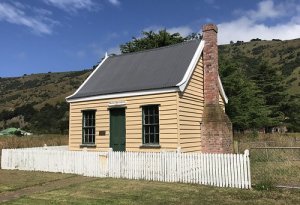
Opened in May 1860, the Okains Bay Library was the first public Library on Banks Peninsula. It was part of Henry Torlesse’s work, as Vicar, to provide an alternative to the drunkenness and other lawless activities that prevailed at Okains Bay in the early days of its settlement by Pākehā. Land was purchased from John Fluerty, a local farmer, and with the help of Arthur Tucson, 220 books were collected within a year with another 500 on order from England. In latter years, the regular visits of the Country Library Service van provided the eager readers of Okains with the latest reading material. Both internally and externally the Library looks much as it did when serving its community in former times.
St John, the Evangelist Church
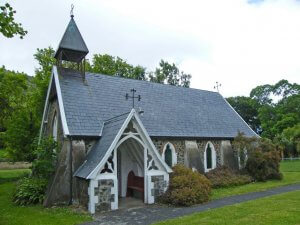
St John the Evangelist Church was the third stone church built in the Canterbury Anglican Diocese. It was built by Edward Morey, a stonemason who emigrated from England arriving in time to build a replacement for the Holy Trinity Church in Lyttleton. He then built St Cuthberts in Governors Bay before moving to Akaroa and building many fine buildings, including St John the Evangelist Church and the first Government Okains Bay School. The foundation stone for St John’s was laid on New Year’s Day 1863 and the church was opened on the last day of June that year. The church is constructed of creek boulders and locally quarried rock. The bricks around the windows were made and fired in Okains Bay while the white stone around the windows was obtained from Quail Island in Lyttelton Harbour. Unfortunately, like many other Canterbury churches, St John’s was badly damaged in the earthquakes and is currently out of action awaiting repairs.
The Old School
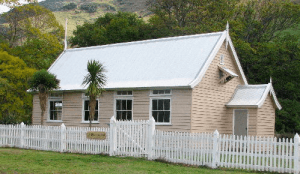
When this two roomed Government School opened in 1872, it marked a big step forward in schooling for Okains Bay. An inspector who visited declared that the Okains Bay School was unsurpassed in his experience. By 1920, the school was deemed outdated and in 1939, a new school was built opposite the store. For a number of years after it closed, the Old School was used as a gymnasium and then became the East Coast Bays Garage, with the front cloakroom removed from the eastern end and the wall opened up. A school reunion in 1997 increased community support for a project to restore the Old School to complement the relocated heritage buildings in the museum and other local heritage buildings. In 2006, the New Zealand Lottery Grants Board gave a grant of $97 000 to assist with the restoration. The restored building was formally opened to the public at the Waitangi Day commemoration on 6 February 2009. If you wish to visit the Old School, please enquire at the office. Enjoy a walk around the 19th century classroom, complete with a rows of old desks, slates, and memorabilia of schooling in times past – including a cane!
Okains Bay Store
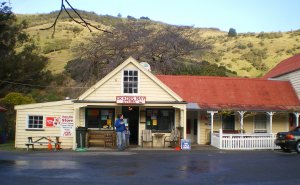
The Okains Bay Store is one of the earliest store and dwelling complexes on Banks Peninsula and has remained in almost continuous use since its construction by John Robinson in 1878. Robinson’s brother William managed the store and added a post office to the building in 1892. A residential addition was added to the building around the turn of the century. The store was later operated by John Robinson’s son, William, who retained the role into the 1930s. The property was purchased by Murray Thacker in 1972 and he transferred it to the museum in 2010. The store is open most days for snacks, drinks, and ice creams!
Seed Store
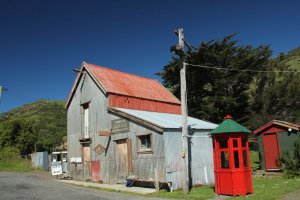
The former seed store has high historical and social significance as one of the few remaining cocksfoot sheds on Banks Peninsula. Cocksfoot seed production was a major industry on the peninsula from the late 19th century until the early 20th century with the seed being sold both nationally and internationally. The Okains Bay Seed Store was used for the finishing and the sale of cocksfoot and was constructed some time between 1880 and 1908. During the early 20th century the cocksfoot shed became a meeting place for men and had a three quarter pool table set up in it. It is owned by the museum and remains on the same land parcel as the store.
